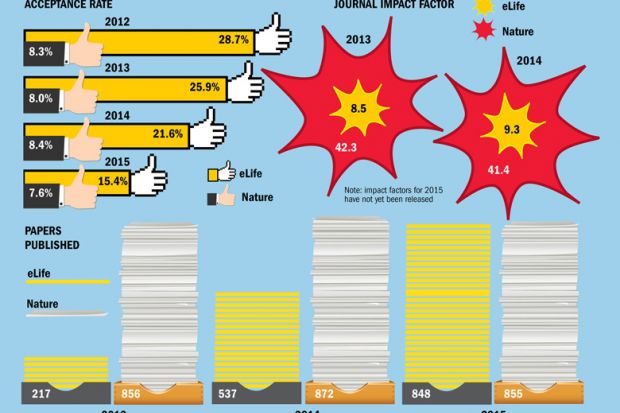This month, eLife’s backers – the Howard Hughes Medical Institute, the Max Planck Society and the Wellcome Trust – said that they would extend support until 2022 with a £25 million boost.
Four years on, how is eLife doing?
It is now publishing as many papers as Nature, with acceptance rates falling from more than one in four when it was set up to about 15 per cent last year.
Along with many other academic critics, eLife rejects the use of journal impact factors, which measure the average number of citations papers receive. However, the measure remains watched by some researchers hoping for promotion, and on this count, eLife remains behind Nature.
Science declined to give year-by-year breakdowns for acceptance rates and papers published. A spokeswoman said that about 800 papers were published each year, and 6 to 7 per cent of submissions were accepted. Science’s journal impact factor has remained in the low 30s throughout the period.
POSTSCRIPT:
Print headline: Taking stock: how is eLife measuring up?
Register to continue
Why register?
- Registration is free and only takes a moment
- Once registered, you can read 3 articles a month
- Sign up for our newsletter
Subscribe
Or subscribe for unlimited access to:
- Unlimited access to news, views, insights & reviews
- Digital editions
- Digital access to THE’s university and college rankings analysis
Already registered or a current subscriber? Login

